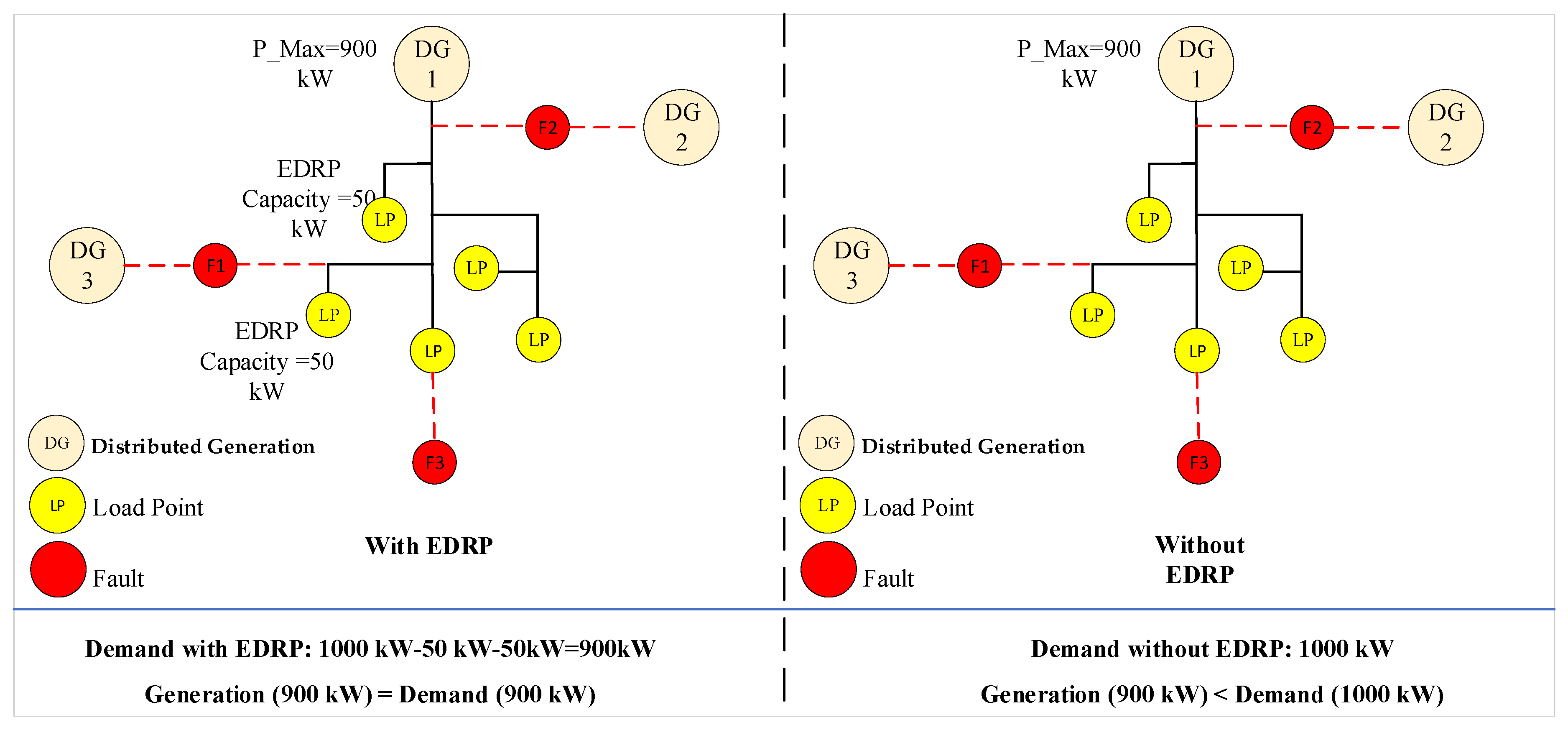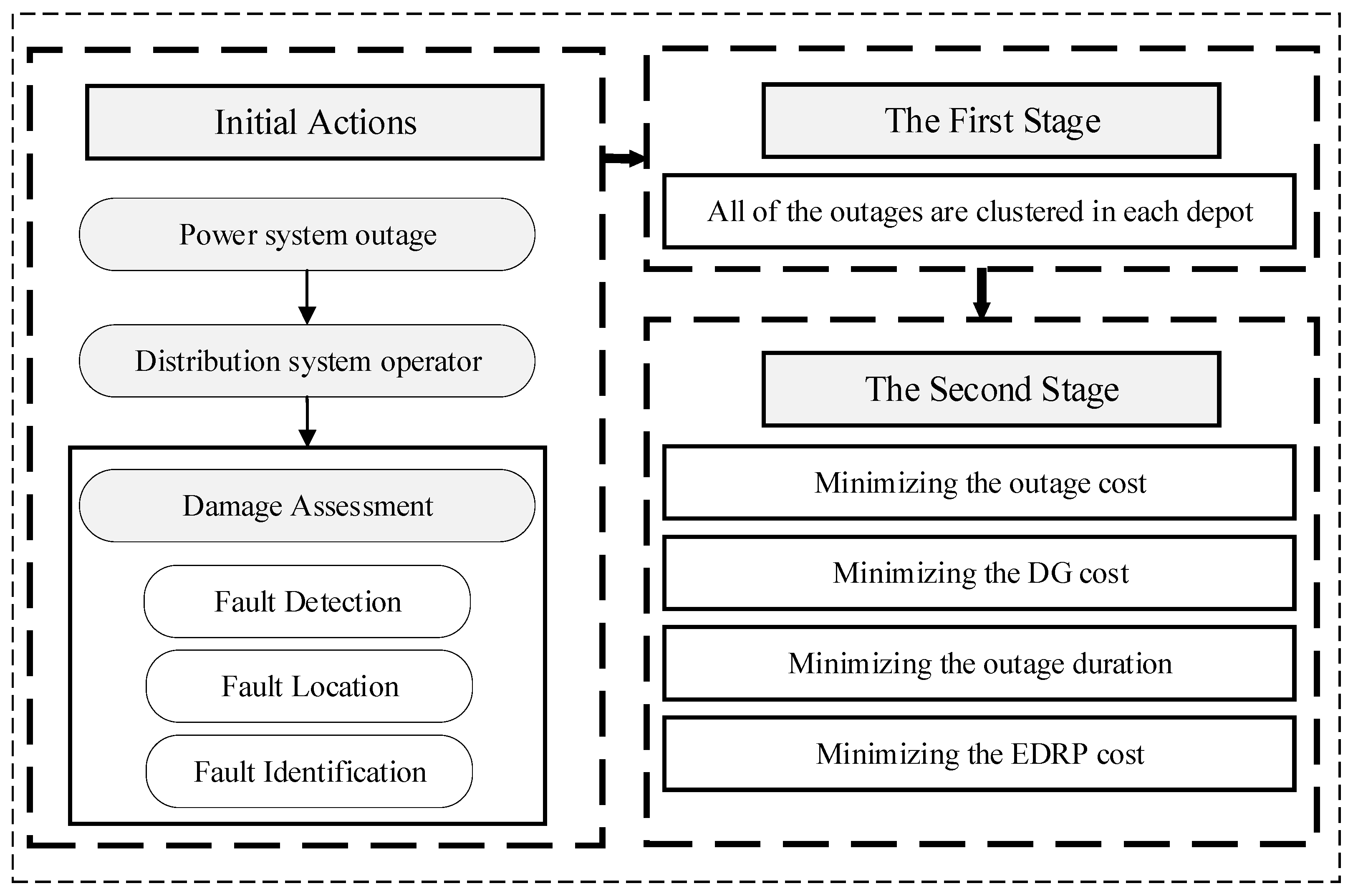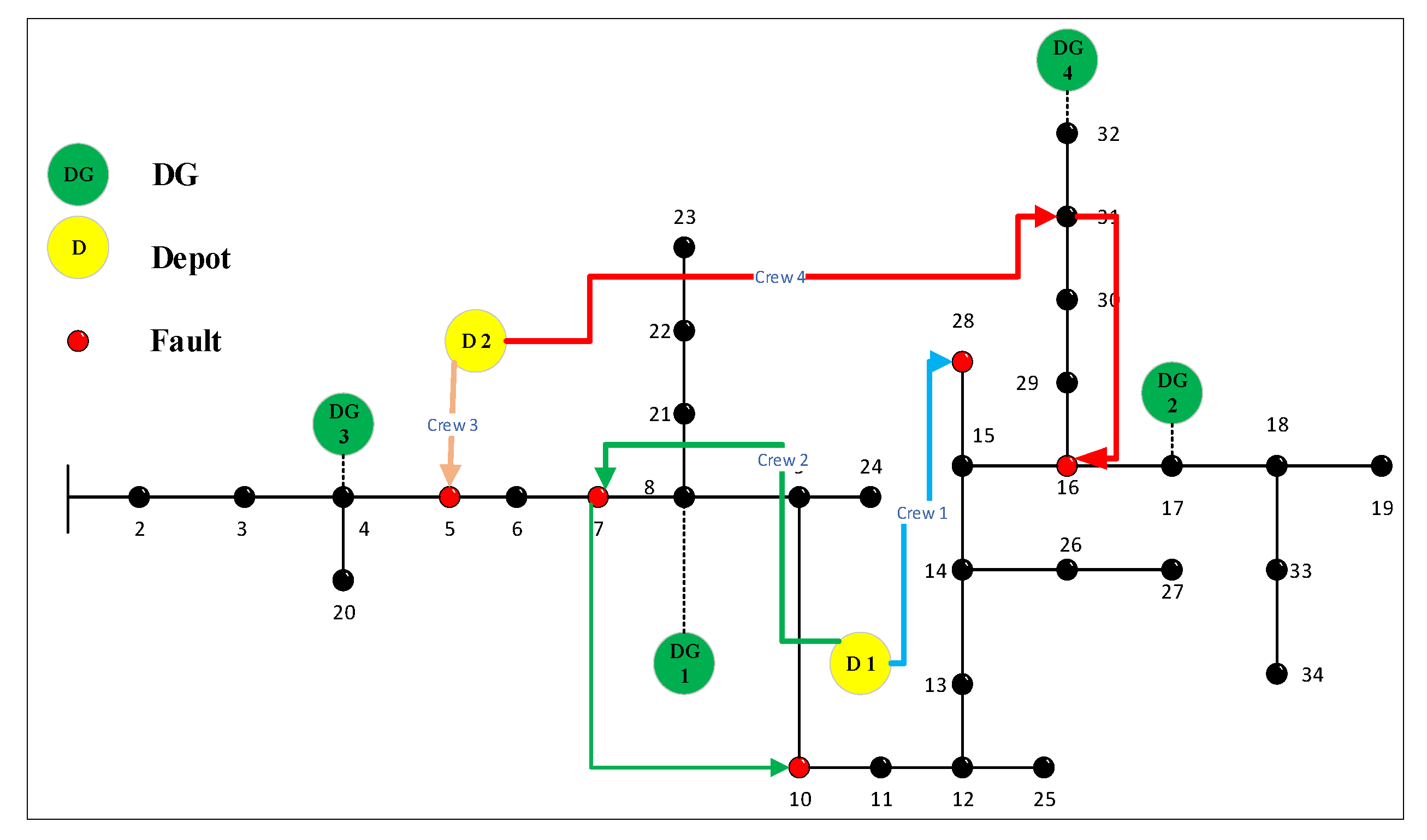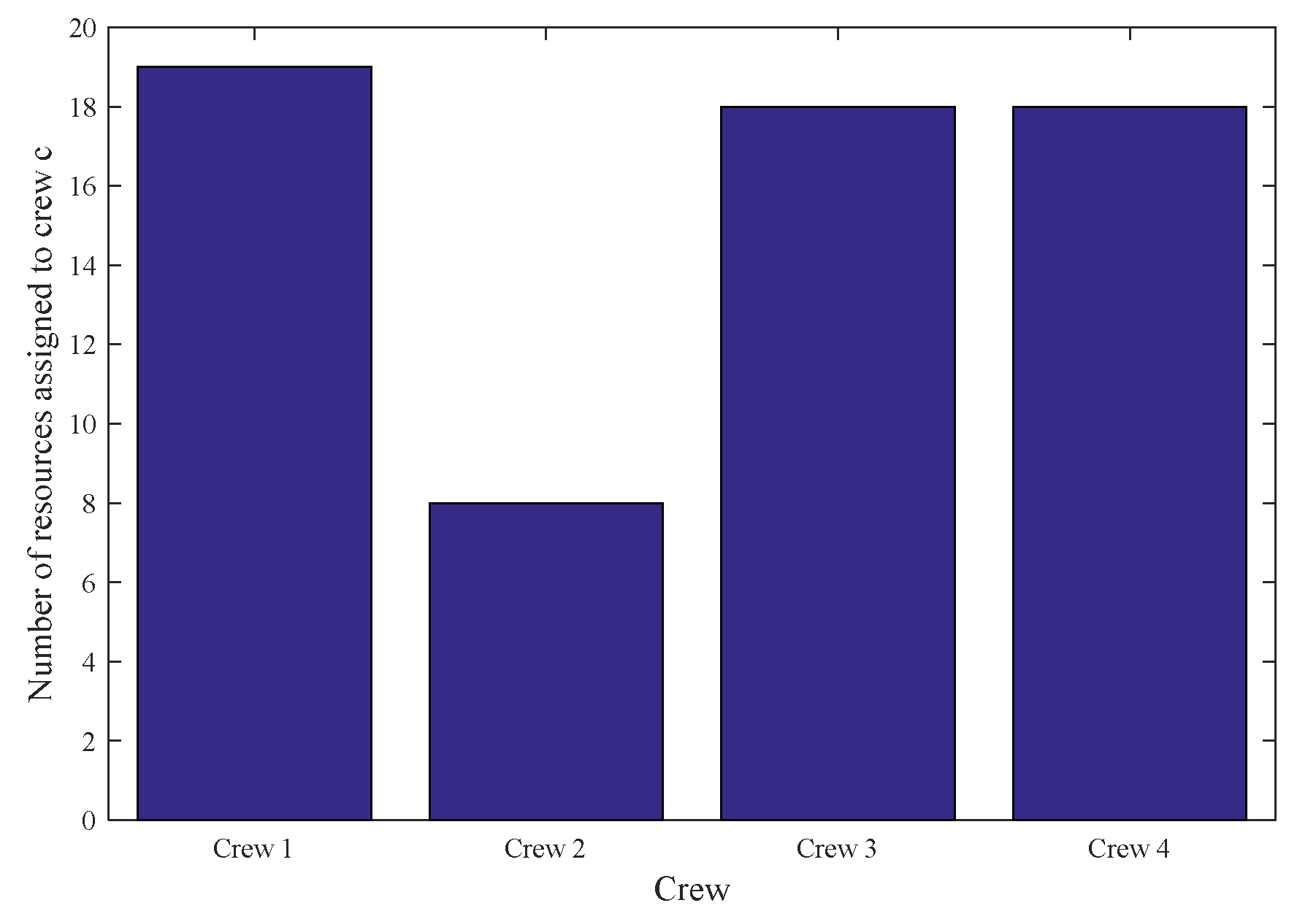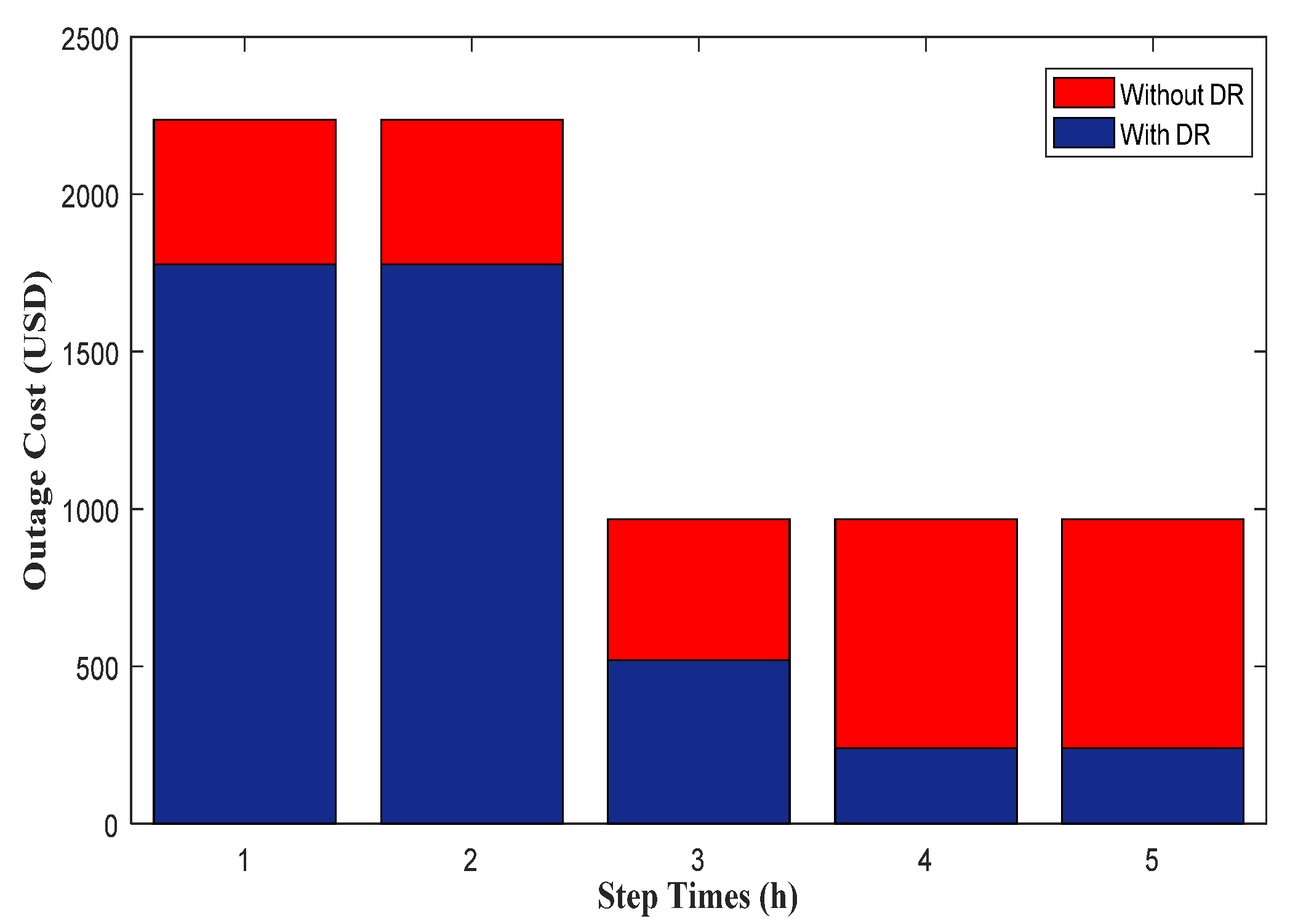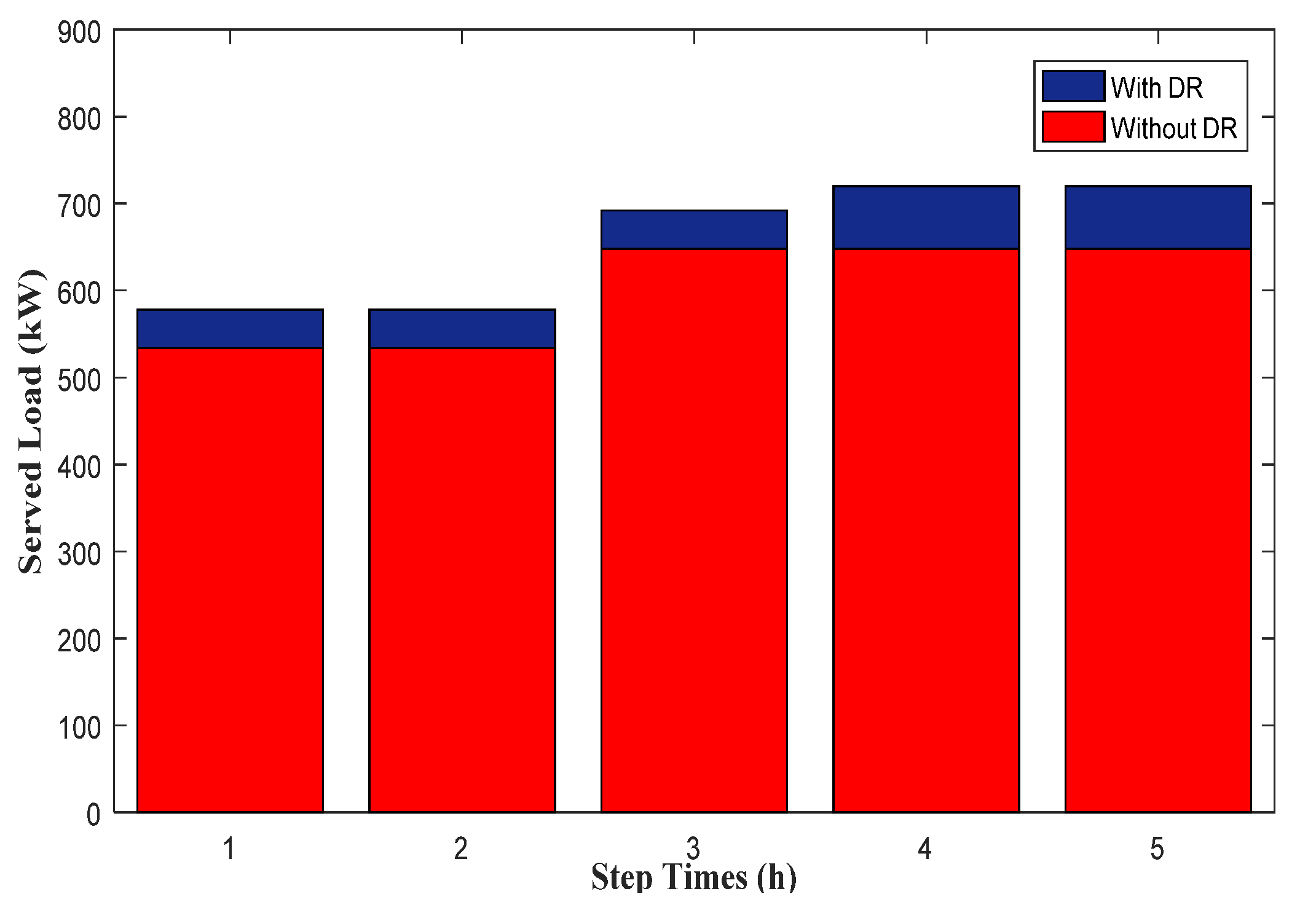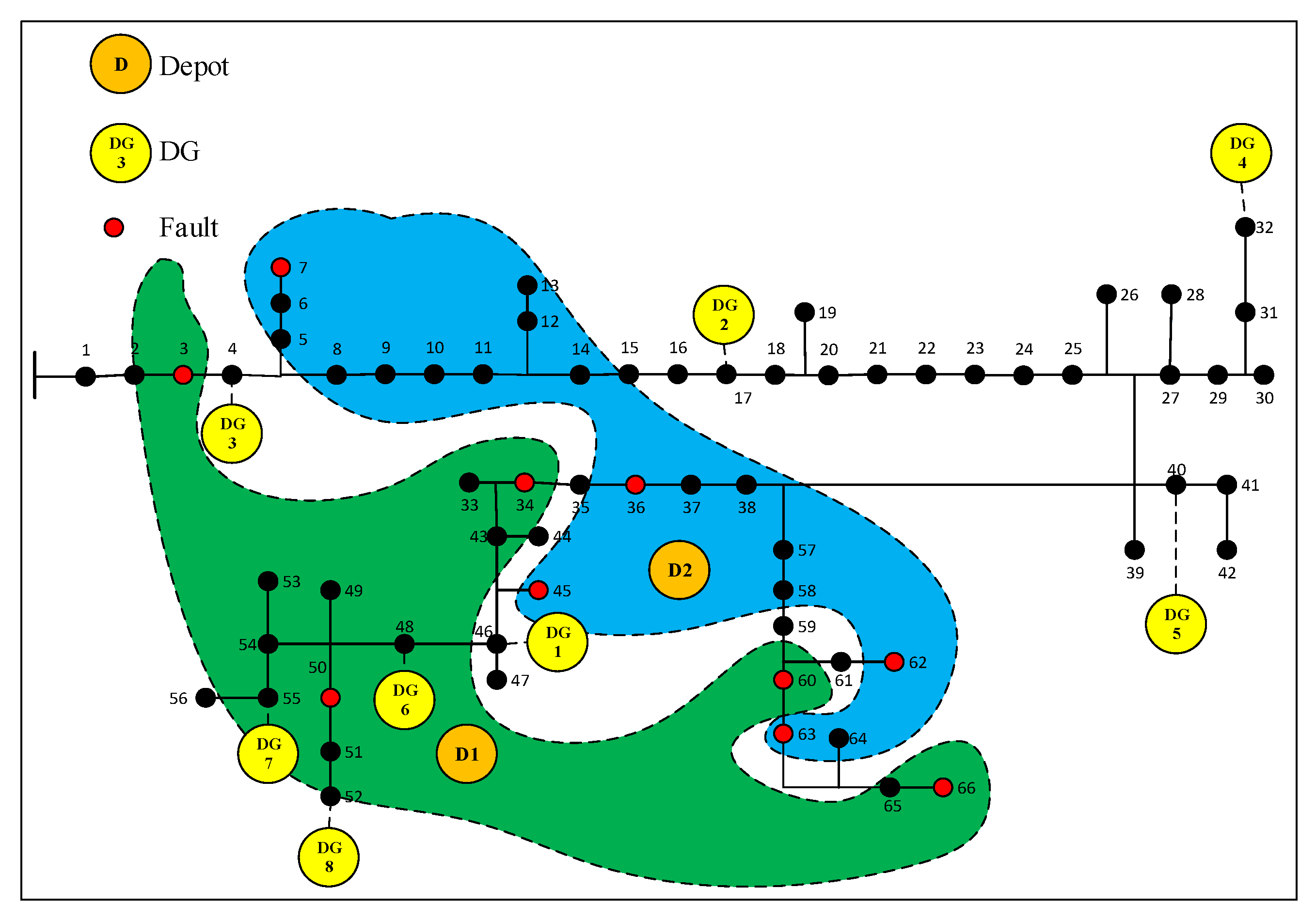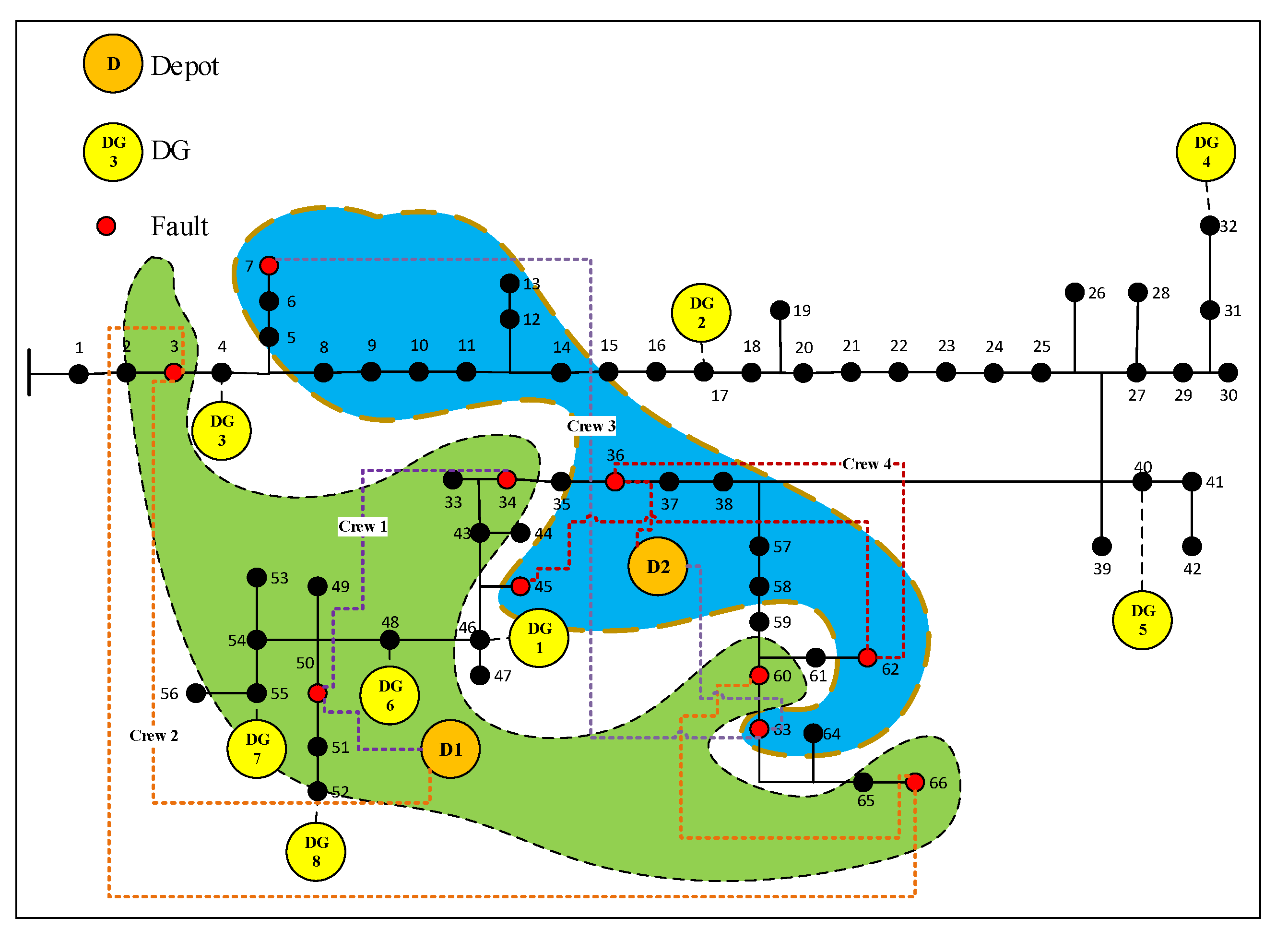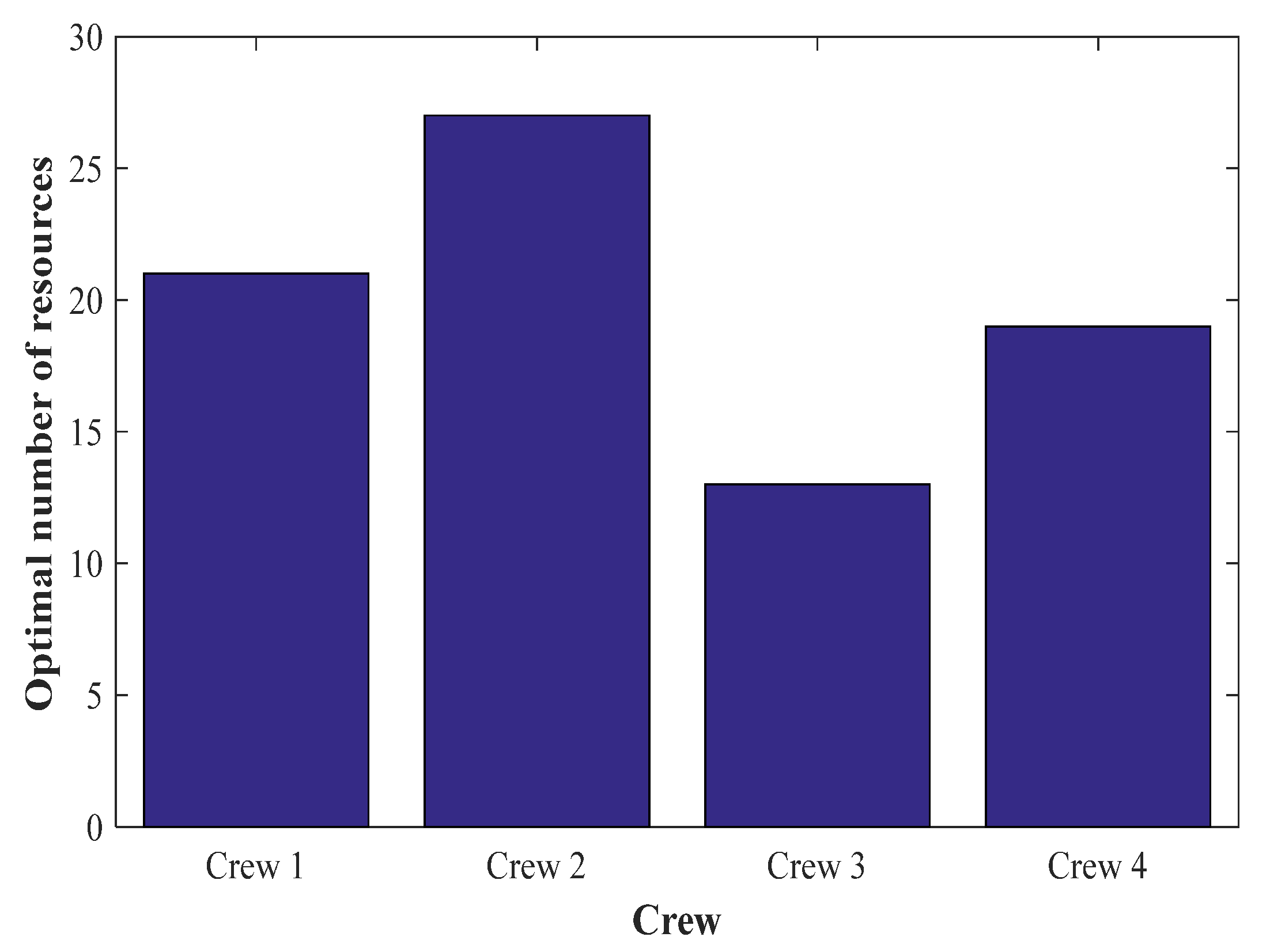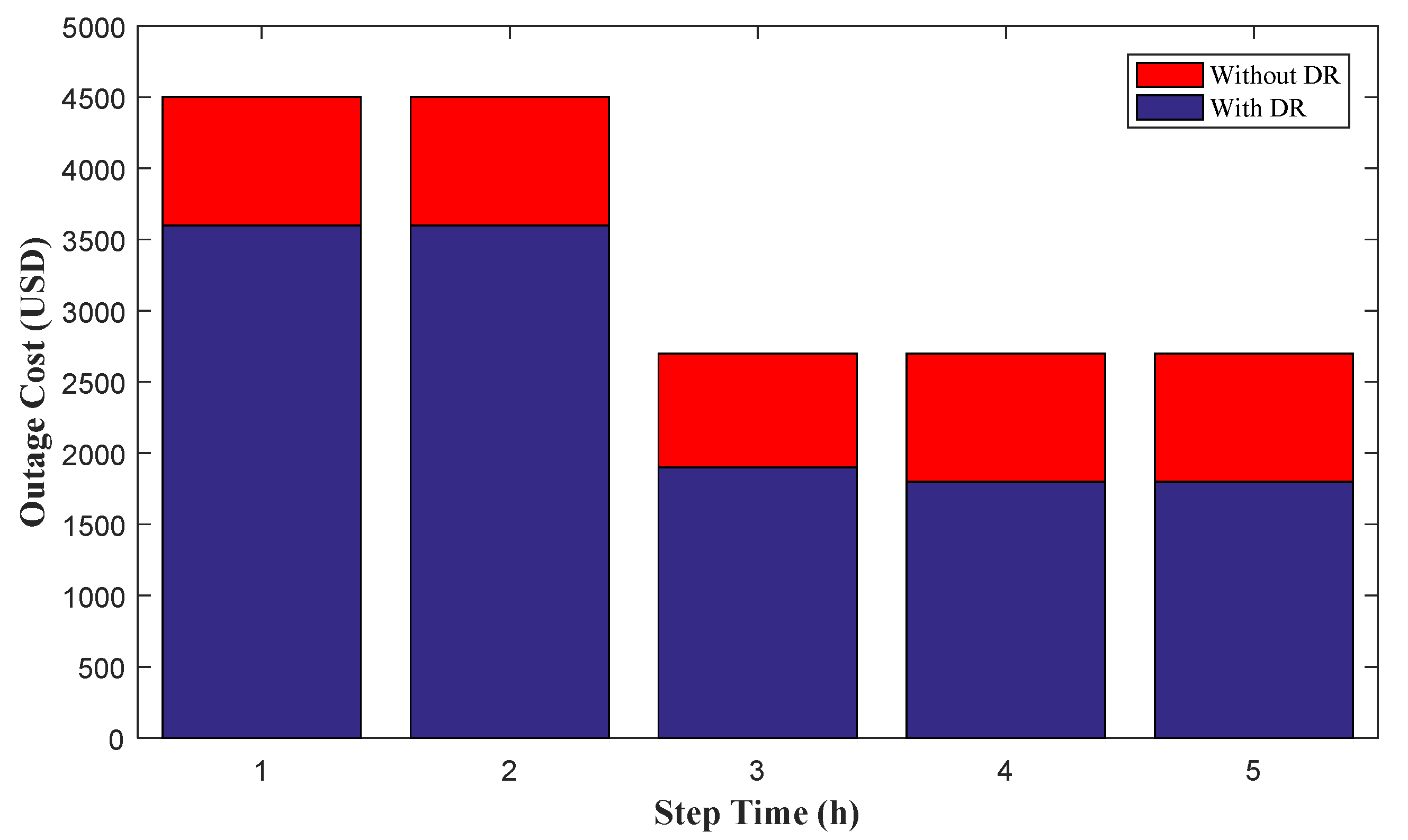4.1. The First Stage
Outage clustering is the main target in the first stage of the proposed structure. The basic and main idea of outage clustering is relating the outage to the nearest depot. However, each outage should be clustered in only one cluster (depot). Additionally, the constraints of the resources and the proficiency of each depot should be considered. The input data of the first stage are as follows:
The estimated distance between the outages and each depot.
The number of resources in each depot.
The required resources for outage clearing.
The proficiency of each depot.
This stage causes a decrease in the processing time for the problem. The objective function of the first stage is defined as Equation (1):
In Equation (1), the variable is defined to decide which outage m is assigned to the depot . Additionally, is the distance between the outages and each depot.
The main target of the objective function is to assign the outages to their closest depots. After solving Stage One, all the outages should be clustered into one depot using Equation (2):
It is clear that each damaged component needs some equipment for repair. Regarding the issue, Equation (2) shows that the damaged component (outage) should be clustered into the depot that has adequate equipment for repairing the outage.
In Equation (3), the parameter and indicates the number of resources in each depot and required resources for outage clearing, respectively.
Furthermore, Equation (4) shows that each outage should be assigned to a depot that has proficiency in repairing the damaged component:
In Equation (4), the parameter shows the proficiency of each depot in clearing the outages. In this equation, the binary parameter is considered higher than the clustering binary variable . Therefore, if the amount of is considered equal to zero, then the amount of is determined as equal to zero. Therefore, the intended outage will not be clustered in a depot that does not have adequate proficiency.
4.2. The Second Stage
The objective function of the first stage is defined as Equation (5):
In Equation (5), the first section is defined to consider the cost of load shedding and system outage. In this regard, the parameter
is defined to show the difference between various buses. The second section is provided to decrease the RRC time. Moreover, the third term is considered to minimize the DG cost in crisis times, and the final section of the objective function is presented to minimize the demand response cost. In Equation (5)
,
,
and
are defined as coefficient parameters for the objective function. One of the important constraints in the power system is the balance of generations and loads, which is defined in Equation (6):
indicates the susceptance between bus b and bp. Additionally, shows the angle of the bus b in time t.
Equation (6) shows that the sum of the DG output power and transmission power should be equal to the demand in each time interval. The capacity of the distribution lines is limited to
. Therefore, Equation (7) is introduced as:
where the variable
is defined as the status of the damaged component after the crews visit and fix the damaged component. The status of the damaged component at each time is lower than or equal to
, which is introduced in Equation (8):
In Equation (9), the power of each DG is forced to be lower than or equal to
.
If a load is energized, it should be remain energized, which is enforced by Equation (10):
Equation (11) shows that if a crew
cth visiting an outage leaves it after finishing the repair, then [
8]:
Equations (12) and (13) force all crews to start from the depot and, after the finishing task, return to the depot [
8].
Equation (14) guarantees that an outage is repaired by only one crew, to ensure that no crew visits a fixed component [
22].
If the
cth crew is moved from a damaged component
m to
, then
= 1. Equation (15) relates the binary variables
and
:
Crews have different abilities and specialties for repairing the damaged components. Regarding the expertise, crews that cannot fix the damaged component should not visit that component. The mentioned issue is addressed in Equation (16) as follow:
The sum of the damaged components that crew
c visits should be lower than or equal to the number of pieces of equipment that are assigned to crew
c by using Equation (17) [
8]:
The sum of the resources that are assigned to crew
c in depot
should be lower than or equal to the resources of the depots according to Equation (18):
The capacity of the crew vehicle is limited to
according to Equation (19):
Equation (20) addresses the time of arrival of a crew at the damaged component. From Equation (20), when a crew arrives at an outage area m at the time
, they spend time
to fix the outage and then take time
to reach the next outage
. The big
M technique is used to separate times to reach the m and n components if the crew does not travel through the
path [
22].
Crews visit the outage area to repair the components, and the binary variable
is equal to 1 when m is fixed at the time
t by using Equation (21):
In Equations (22) and (23), the outage repair time is defined. If crew
c does not repair the
mth damaged component, the time of arrival and the time of repair for this crew should not affect Equations (22) and (23), so
by applying Equation (24) [
8].
If the damaged component
m is repaired by crew
c in time
t, this section (or repaired component) is available in time
t + 1 according to Equation (25) [
8].
